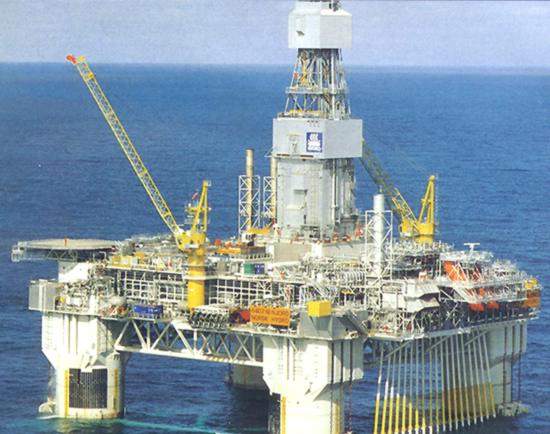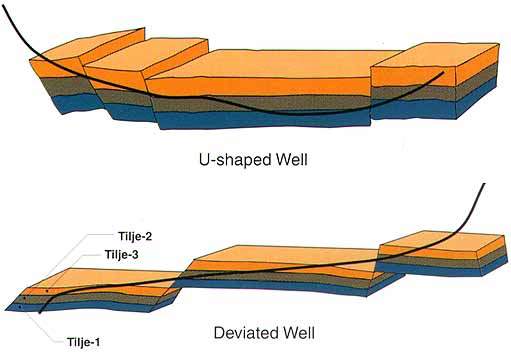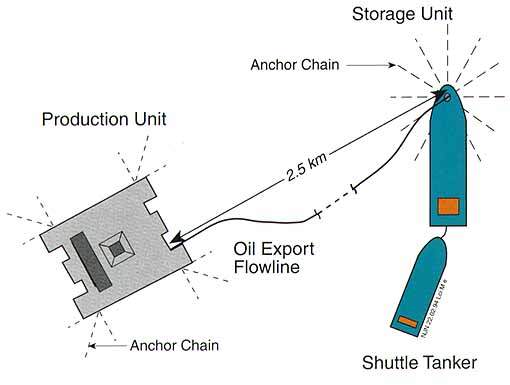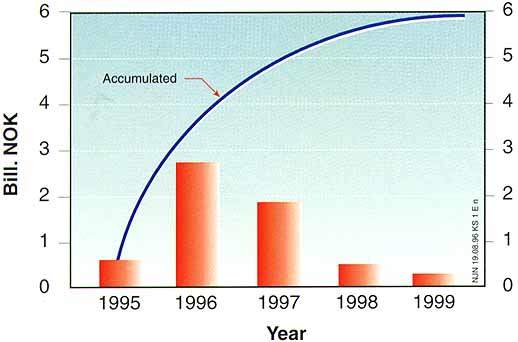The Njord field is situated on Haltenbanken, in blocks 6407/7 and 6407/10, 130km north of Kristiansund and 30km west of the Draugen field. Licences were awarded to block 6407/7 in 1985 and to block 6407/10 in 1987. The water depth in the area is around 330m.
Oil is produced from the Tilje Formation on the East Flank and in the Central Area. The oil-bearing Tilje formation is 100m-150m-deep, covering an area of around 40km². Reservoir pressure is calculated to be at 390bar, 2,850m below sea level. Temperatures at this depth are roughly 114°C.
The development plan has the flexibility to allow for an optional production of other oil reserves in the Tilje Formation, in the Northern Area and in the Ile and Åre Formations, should they subsequently prove to be technically and economically viable. A total of six to ten billion cubic metres of gas are expected to be produced.
Njord: a step further
New technology, the adoption of Hydro Plus measures to increase efficiency, as well as the principles of Norsok, are continuously incorporated into new projects. For Njord, this has led to:
- Simplified solutions
- Cost reductions of around 40%
- Advanced horizontal drilling, reducing the number of wells
- Extensive use of supplier specifications and standards
- Integrated cooperation within the project organisation
The development plan
The plan for the development and operation of the Njord field was submitted to the authorities in February 1995 and approved by the Storting in July of the same year.
The Njord project was completed in 30-31 months, a reduction in project execution time of ten months in comparison with previous Hydro projects of a similar nature. The field has been developed with a floating drilling, accommodation and production platform, which is made of steel and consists of two pontoons, four pillars and the topside.
The topside was built as an integrated deck structure, without separate modules. The Njord development solution is based on the P45 concept developed by Aker.
The platform is located in the field, directly above the wells, which are connected to it by flexible risers. The platform is moored to the seabed by 12 anchor chains.
All well intervention and maintenance is carried out from the platform. The use of horizontal trees facilitates operations and reduces costs.
Production solution
Advanced horizontal drilling techniques have reduced the number of wells that were originally planned from 24 to 15. Oil will be produced from ten wells, four wells are for gas injection and one is for water injection.
All gas produced will initially be re-injected into the Eastern Flank, in order to maintain reservoir pressure.
The long horizontal wells will not only penetrate the different areas in the Tilje reservoir but also the various reservoir segments in the Central Area.
This will result in each well having more oil contact and means the dependence on reservoir continuity is significantly reduced.
Storage and transport
The oil produced from Njord will be stored in a unit anchored roughly 2.5km from the platform. The oil will be piped, whilst power and signals are transmitted telemetrically between the platform and the storage unit.
A turret buoy, based on the submerged turret loading (STL) system, will be used for anchoring and loading the storage vessel. The turret will be moored to the seabed using an eight-point anchoring system.
The oil will be loaded from the storage onto shuttle tankers for export to the market. The storage unit will be unmanned except when unloading the oil and for maintenance.
Production
Production has started from two of the three predrilled wells, and the third well in the East Flank will be used for the reinjection of produced gas.
The production capacity is 70,000 barrels (bbl) of oil a day.











